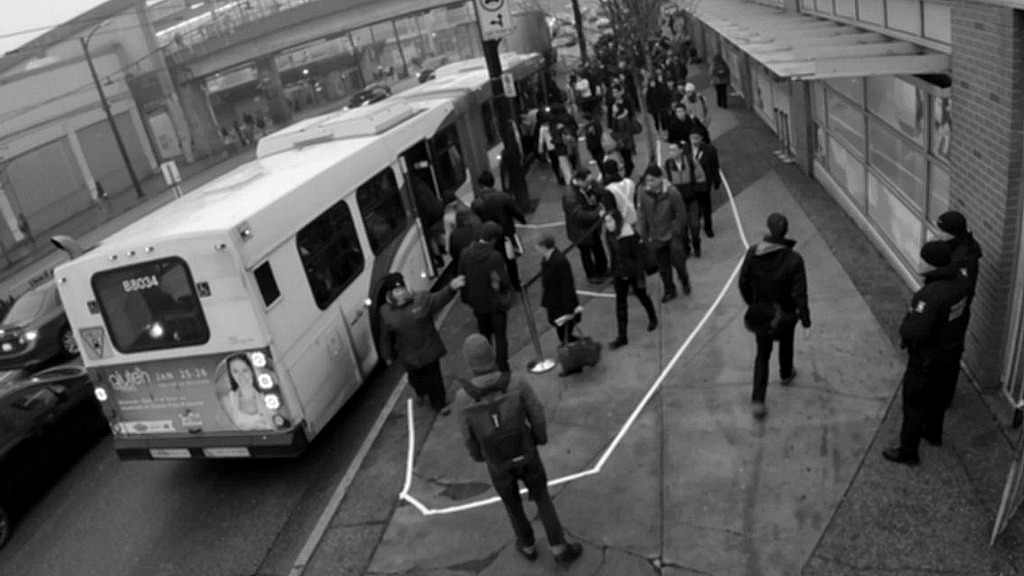Nelson\Nygaard landed a super-easy job. The transit planning firm had to streamline a couple of bus stops in British Columbia for TransLink. Only about 100,000 people ride that particular route a day. It’s just the busiest bus line in North America. (But no big, right?)
Palms sweaty, knees weak, and arms heavy, Nelson\Nygaard already knew what didn’t work: a huge passenger shelter where riders of Vancouver’s 99 Broadway line simply ignored switchback arrows on the ground. (Think airport security without any crowd-control ropes — madness.)
So rather than armchair postulating about what MIGHT work better, the firm did some real-time analysis at two east- and westbound stops, laying down some sidewalk tape on a busy Monday morning and capturing the results on video:
The above video is a timelapse of the westbound stop outside the Broadway-Commercial SkyTrain station. Nelson\Nygaard roped off areas to guide people along, funneling lines into each of the bus’ three doors while leaving room for pedestrians.
At the eastbound stop, only a few pillars near the bus doors and some tape were needed to wrangle people coming from the train into three lines for the bus:
“Live trial-and-error intervention helps push the boundaries of standard planning approaches,” writes Eric Jaffe of Atlantic Cities. For instance, Nelson\Nygaard learned that people ignored eye-level signage. (After all, who can be bothered to read, pre-coffee?)
Tape isn’t exactly a long-term solution, but now that TransLink has some ideas of what works, more permanent improvements are on the way.



